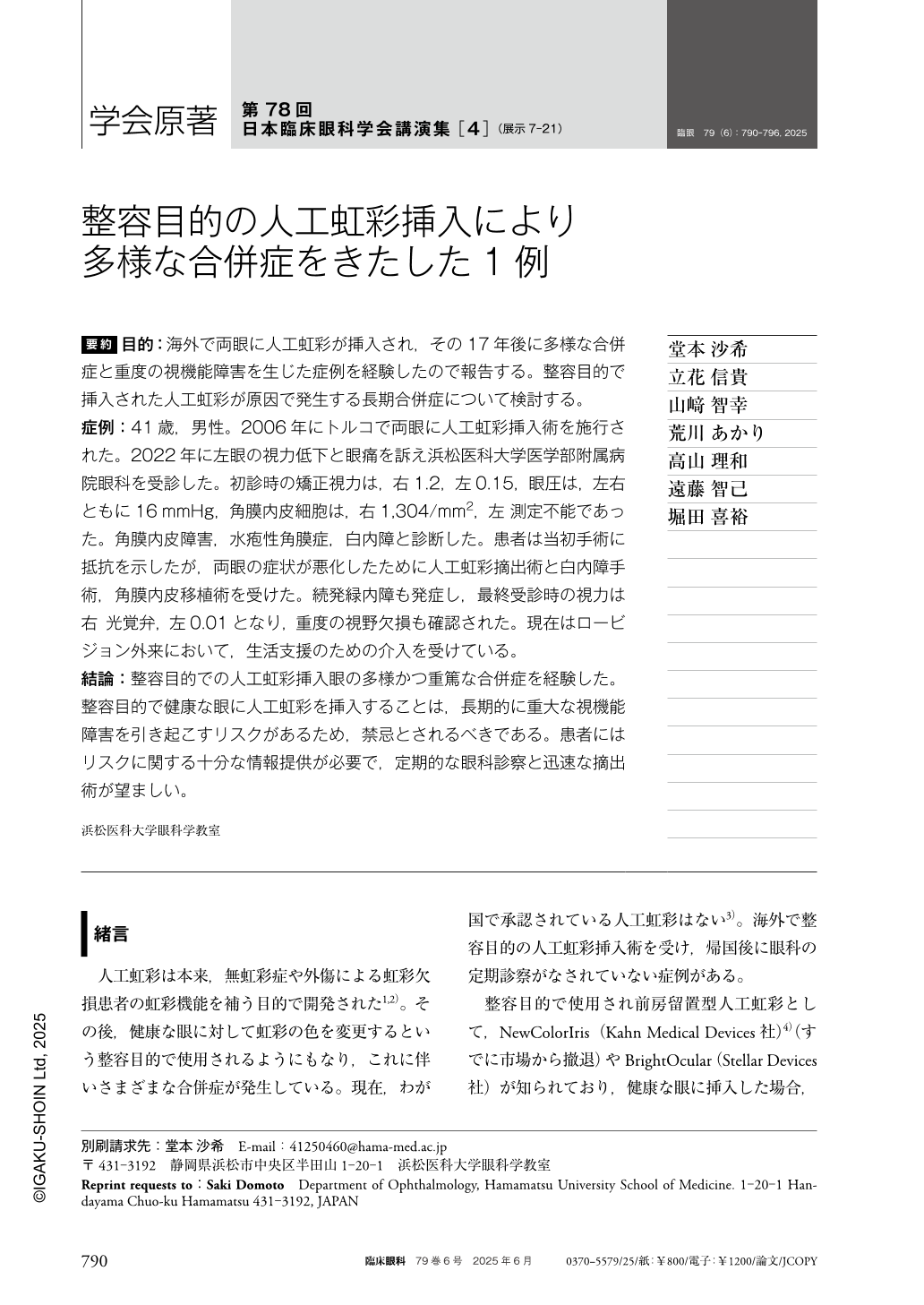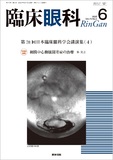Japanese
English
- 有料閲覧
- Abstract 文献概要
- 1ページ目 Look Inside
- 参考文献 Reference
要約 目的:海外で両眼に人工虹彩が挿入され,その17年後に多様な合併症と重度の視機能障害を生じた症例を経験したので報告する。整容目的で挿入された人工虹彩が原因で発生する長期合併症について検討する。
症例:41歳,男性。2006年にトルコで両眼に人工虹彩挿入術を施行された。2022年に左眼の視力低下と眼痛を訴え浜松医科大学医学部附属病院眼科を受診した。初診時の矯正視力は,右1.2,左0.15,眼圧は,左右ともに16mmHg,角膜内皮細胞は,右1,304/mm2,左 測定不能であった。角膜内皮障害,水疱性角膜症,白内障と診断した。患者は当初手術に抵抗を示したが,両眼の症状が悪化したために人工虹彩摘出術と白内障手術,角膜内皮移植術を受けた。続発緑内障も発症し,最終受診時の視力は右 光覚弁,左0.01となり,重度の視野欠損も確認された。現在はロービジョン外来において,生活支援のための介入を受けている。
結論:整容目的での人工虹彩挿入眼の多様かつ重篤な合併症を経験した。整容目的で健康な眼に人工虹彩を挿入することは,長期的に重大な視機能障害を引き起こすリスクがあるため,禁忌とされるべきである。患者にはリスクに関する十分な情報提供が必要で,定期的な眼科診察と迅速な摘出術が望ましい。
Abstract Purpose:This report presents the case of a patient who underwent bilateral BrightOcular®(Stellar Devices)artificial iris implantation overseas and developed multiple complications and severe visual impairment 17 years postoperatively. The long-term complications associated with artificial iris implantation for cosmetic purposes are also discussed.
Case:A 41-year-old man who underwent bilateral artificial iris implantation in Turkey in 2006 presented to our department in 2022 with decreased vision and pain in the left eye. Initial examination revealed corrected visual acuity of 1.2 and 0.15 in the right and left eyes, respectively. The intraocular pressure was 16 mmHg in both eyes. The corneal endothelial cell count was 1,304/mm2 in the right eye;the cell count could not be determined in the left eye. The patient was diagnosed with corneal endothelial dysfunction, bullous keratopathy, cataract, and secondary glaucoma. The patient was initially resistant to surgical intervention;however, he underwent artificial iris removal, cataract extraction, and corneal endothelial transplantation owing to symptom progression. The final visual outcomes were light perception and 0.01 in the right and left eyes, respectively, with severe visual field loss. The patient is currently receiving treatment to supportactivities of daily living at a low-vision clinic.
Conclusion:This case report illustrates the severe complications associated with cosmetic artificial iris implantation. Artificial iris implantation for cosmetic reasons should be contraindicated, given the significant risk of long-term visual impairment. Comprehensive risk information should be provided, and regular ophthalmological follow-ups and timely removal of the implants must be prioritized.

Copyright © 2025, Igaku-Shoin Ltd. All rights reserved.


